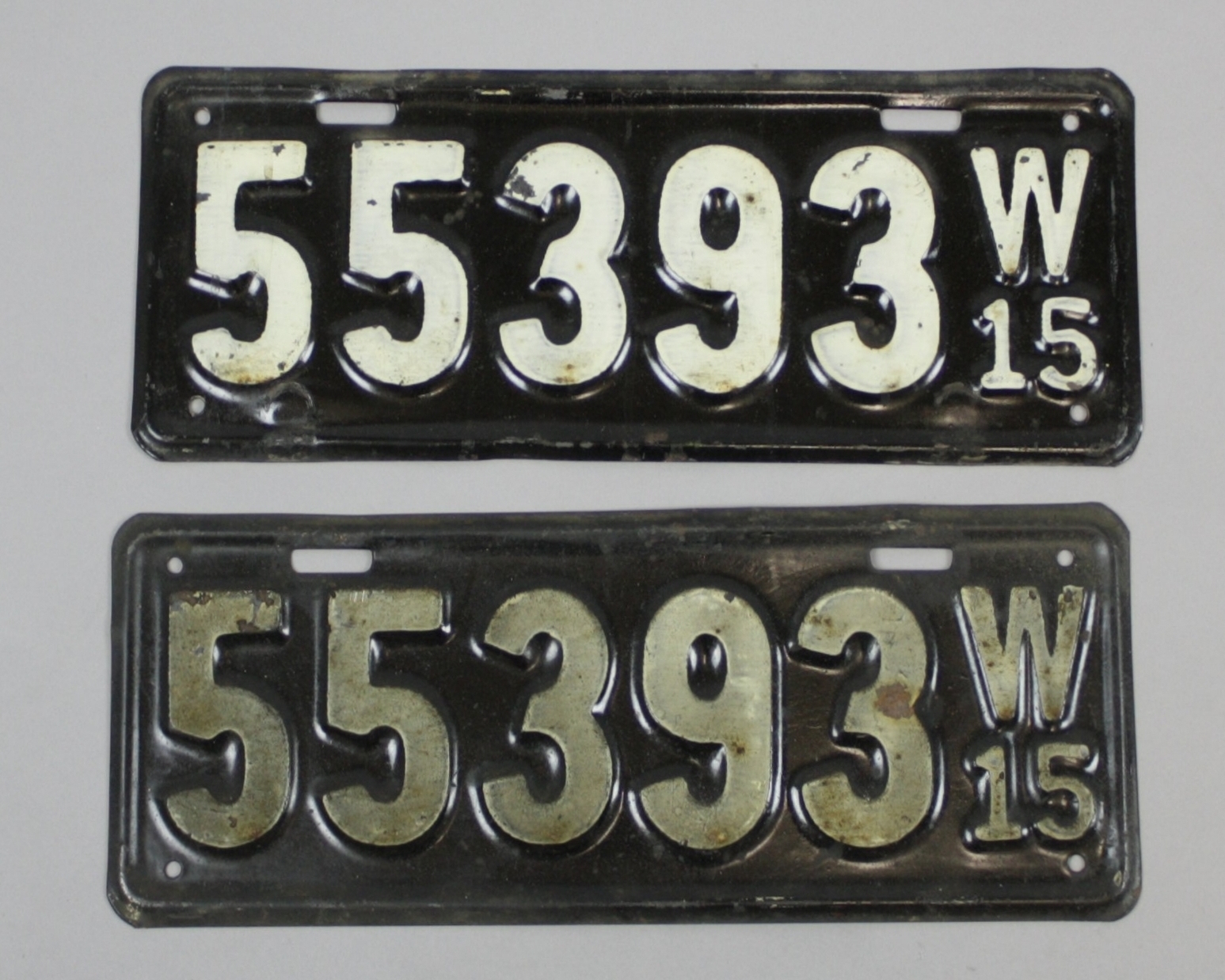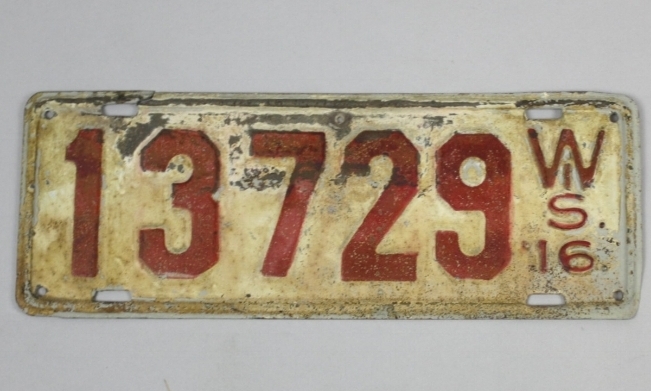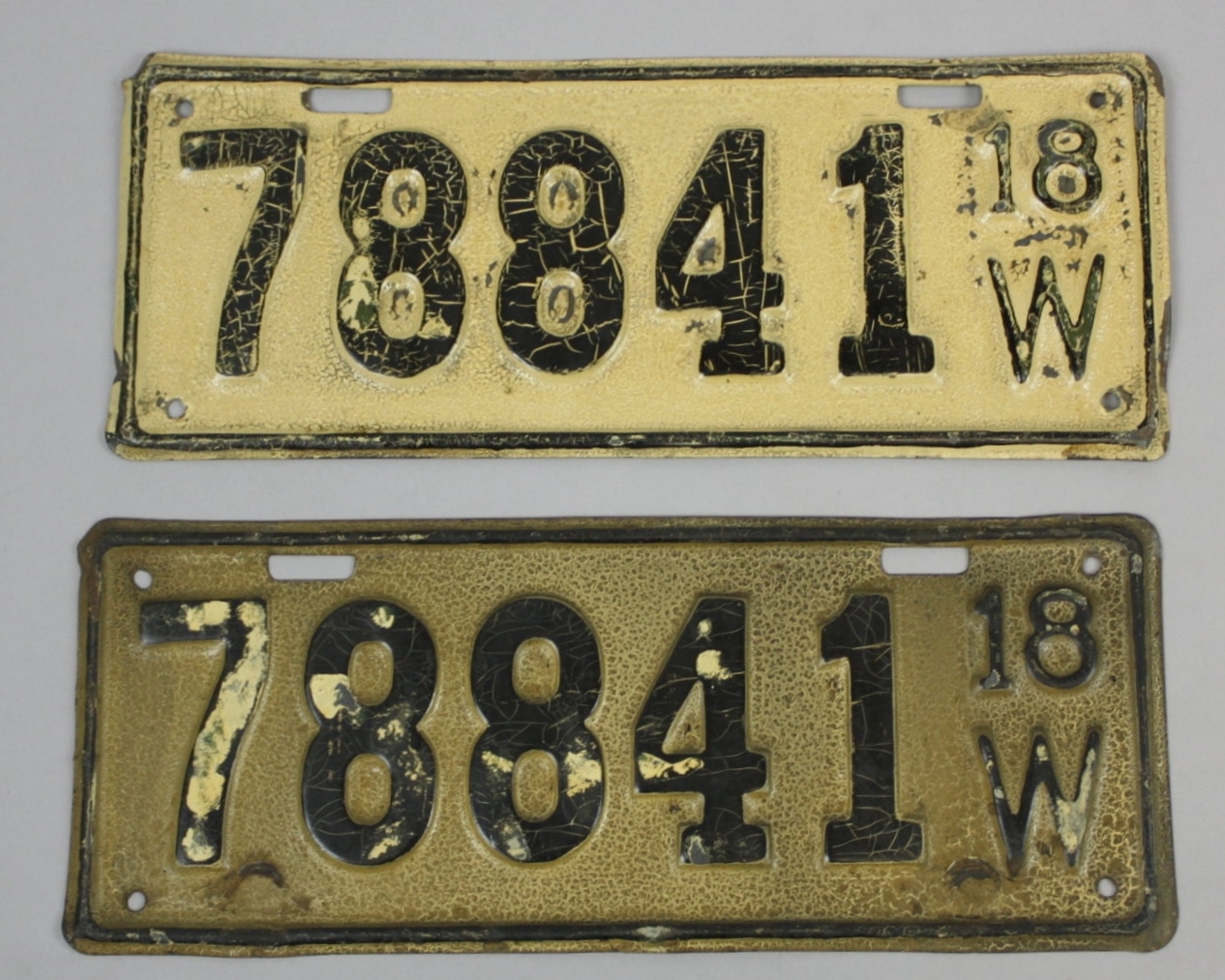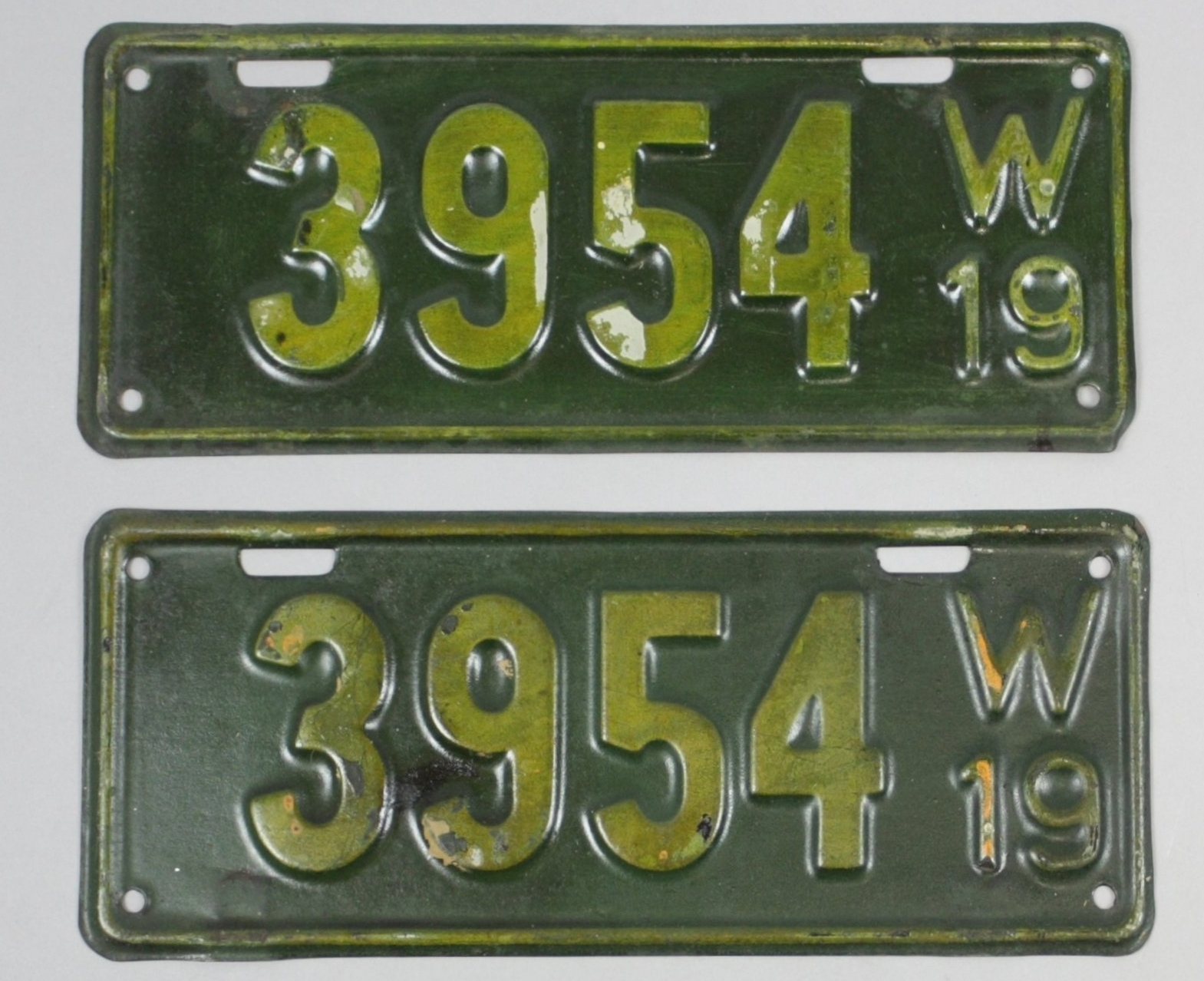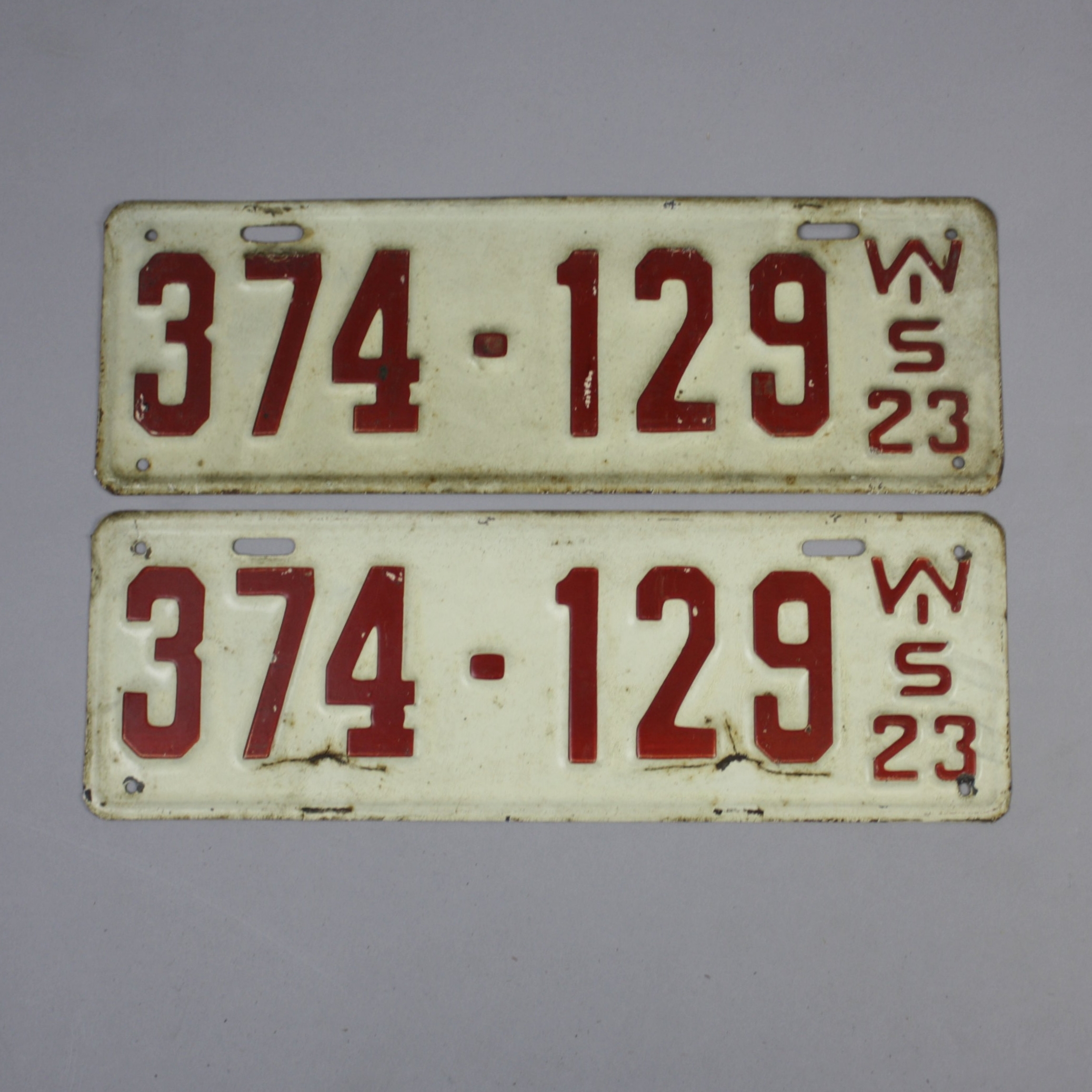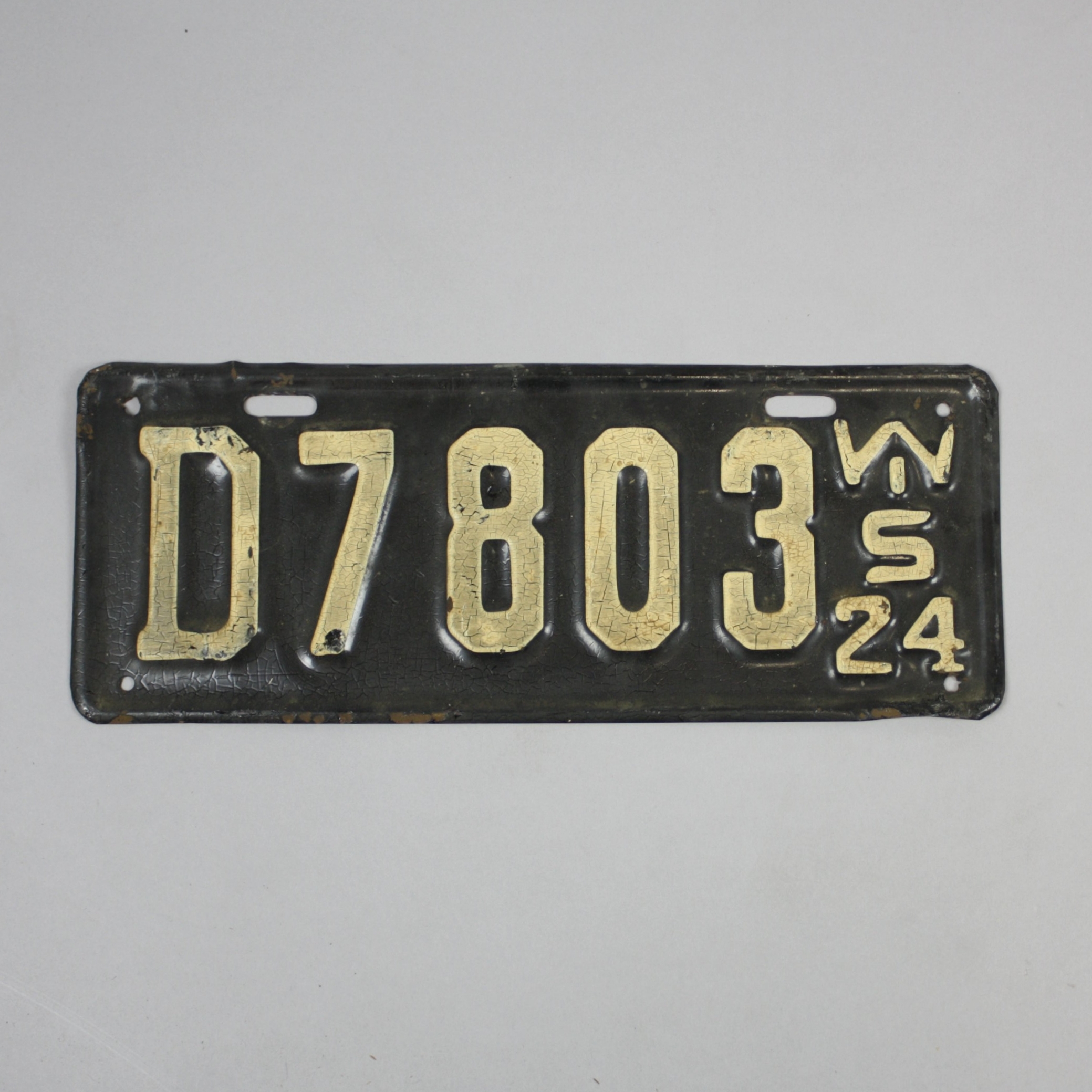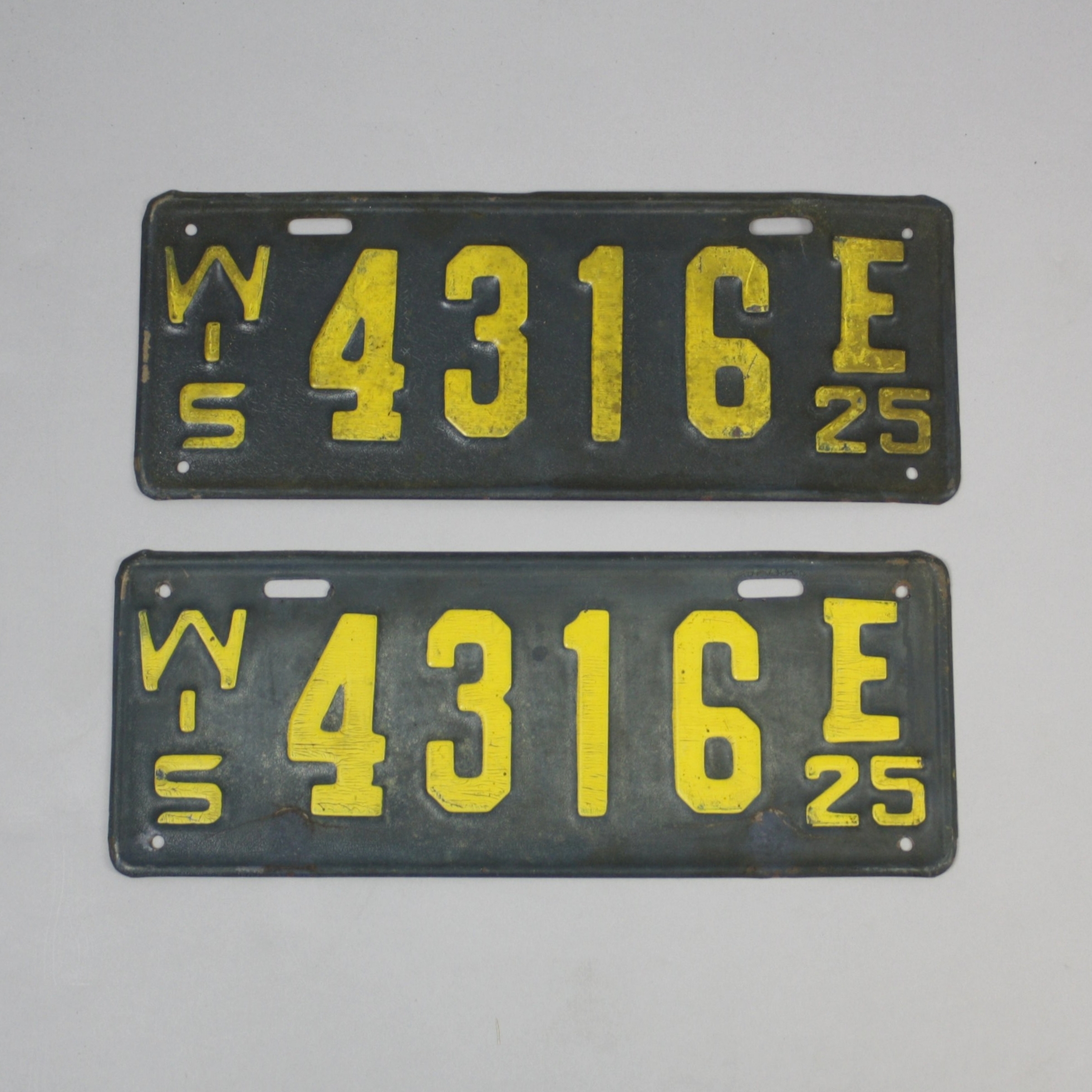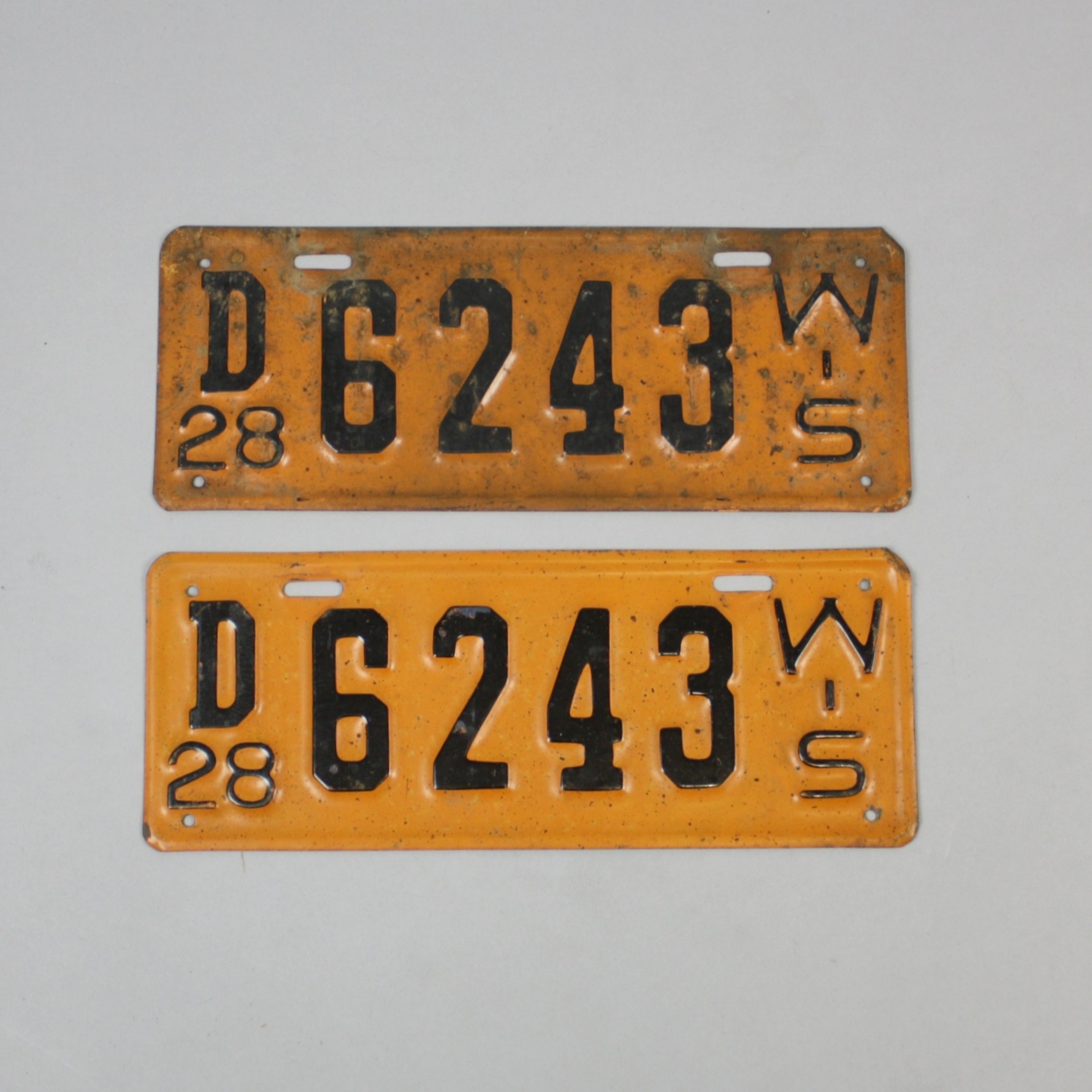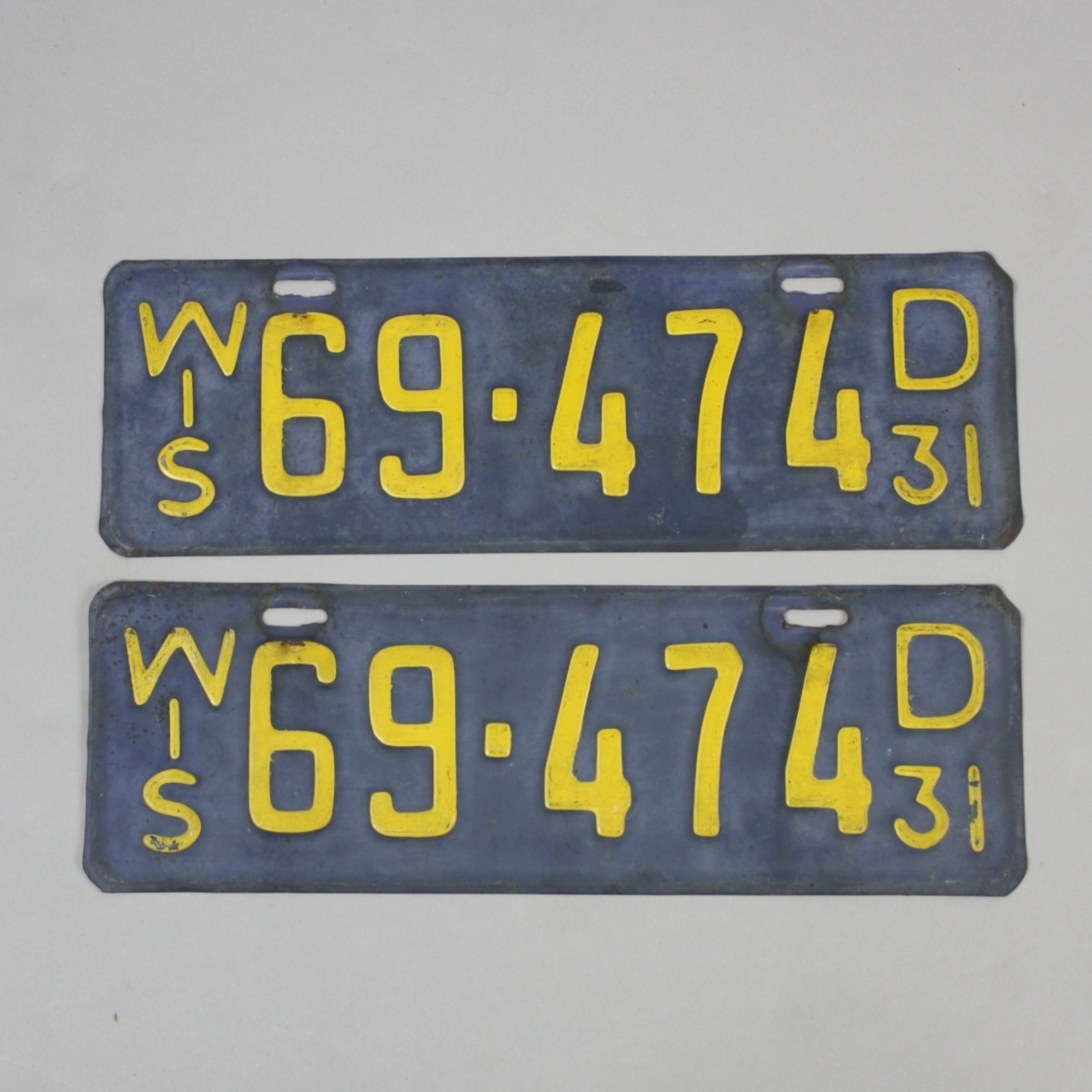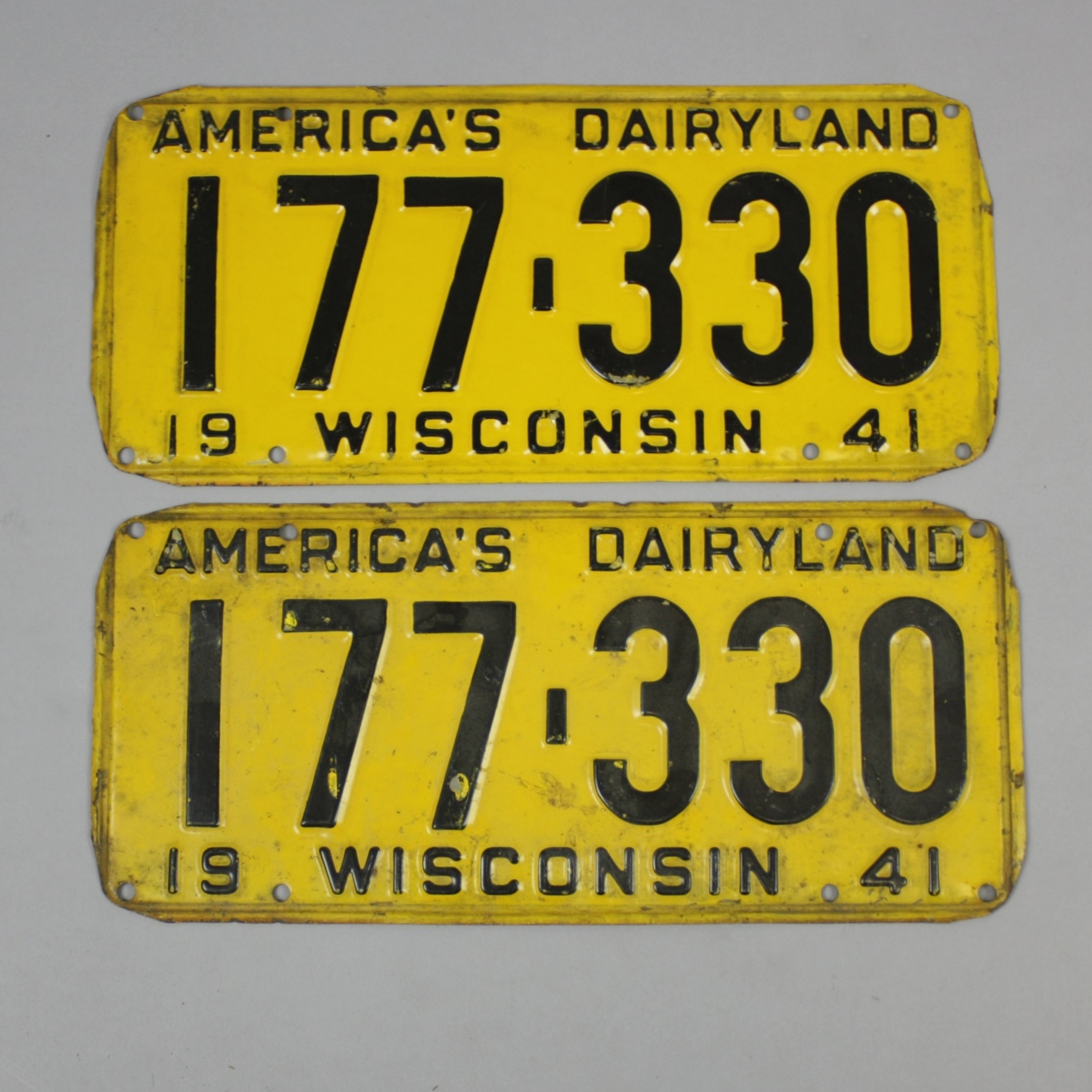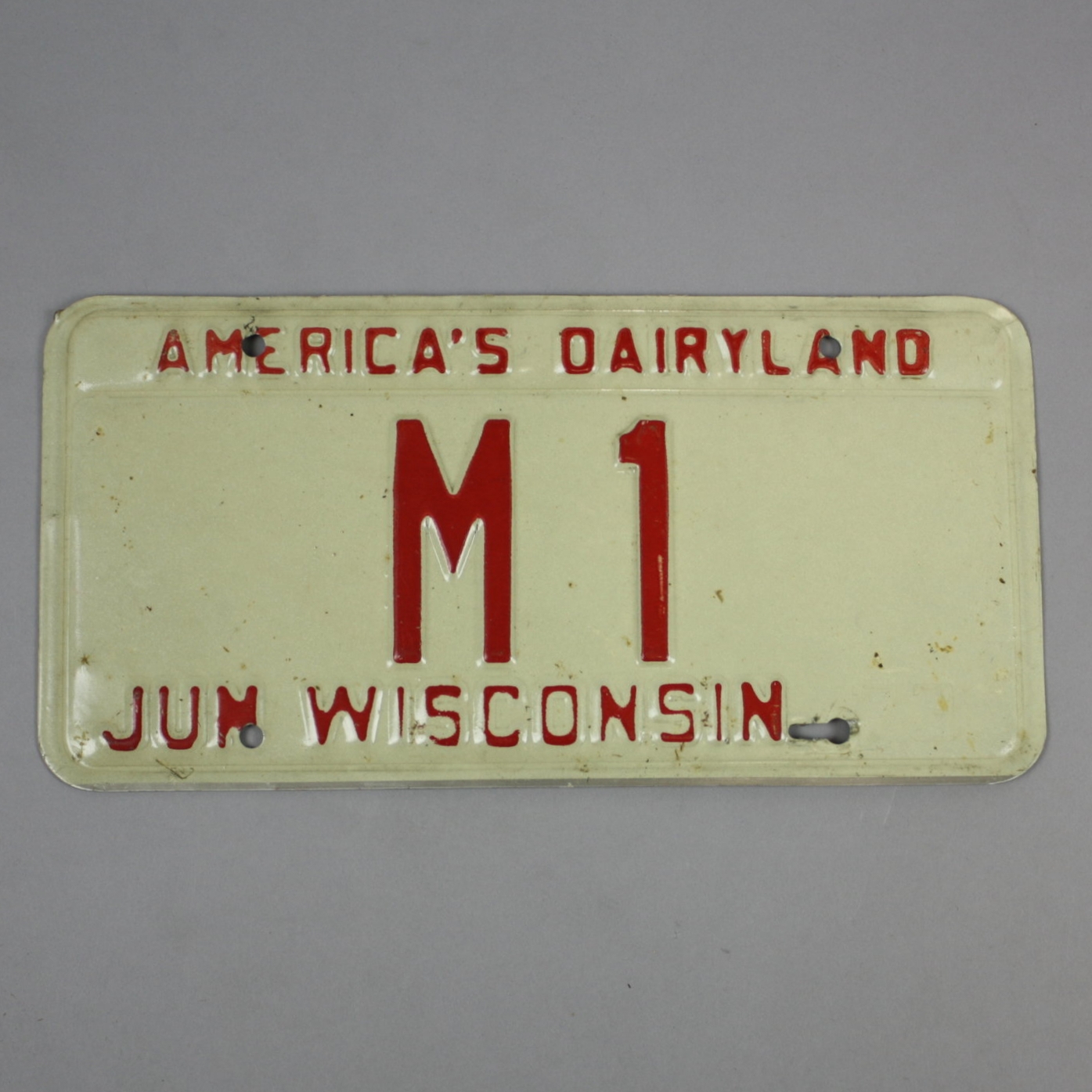The Evolution of Wisconsin License Plates
Natalie Van Dam
The history of license plates in the State of Wisconsin is long and detailed. They changed sizes, colors, shapes, and designs many times. Also, the system used to issue license plates underwent many changes over the course of its history. The history of Wisconsin license plates goes back to 1905 when the first federally issued plate was created and sent on its way.
The 1910s
License plates of the 1910s were very straightforward and clear cut. Ever since the first plate was issued in 1905, plates had to be re-issued every year to update a driver's registration as the years were part of the text that was directly printed onto the plate. They had only the year of the plate, the number code to identify the vehicle and its registration, and a W or WIS for the state of Wisconsin.
The 1920s
In the mid-1920s, license plates in the State of Wisconsin began to also show the weight class that they were assigned to. This made it harder for people to put a license plate on a vehicle it didn't belong to and not pay for their yearly vehicle registration. The weight class letters are A, B, C, D, and E. The weight class assigned to letter D seems to be the most common weight class for a standard passenger vehicle at the time as this is the letter that is seen most often in these years. The practice of putting these specific weight class letters on every license plate continued into the early 1930s.
The 1930s
Wisconsin continued to use the vehicle weight class letter code on their license plates until 1931. In 1932 they decided to change up the style of the plates again and began to put the full name of the state on their license plates, instead of just the WIS that they had been using throughout most of the '10s and '20s. They also began to make short, tall plates, along with their standard size plates. A good example of this is the licesne plate below from 1938. On these short plates, they only used the WIS code for the state of Wisconsin instead of spelling out the full name.
The 1940s
In 1940, the design of the license plate was changed once again and the text "America's Dairyland" began to be added to the plates. Also, due to the shortage of metal that was caused by World War Two, it was much more common to find smaller plates in the early '40s. The state also began to try something new and began to use metal tabs printed with the new registration year that could be attached to an existing license plate. It was the beginning of the idea that would later lead to the registration renewal process of today where stickers are adhered to the plate to renew a registration. In 1945, Wisconsin also made history by becoming the first state in the USA to stagger their registration and renewal throughout all twelve months of the year. A small number was place at the front of the ID number on the plate that coincided to the month that the plate expired.
The 1950s and 1960s
In the early 1950s, the format on the license plates for the month of expiration changed from a number code to a letter code. There was now a letter prefix that was matched to each month. In the early 1960s, they also began to use adhesive stickers, instead of the small metal tabs, to update the year of registration on the license plates. In the late 1960s, they also updated the letter prefix codes that coincided with the months the plates expired. Due to the large volume of plates that were needed, some plates had a letter code with two letters for their month of expiration rather than one. Also, in 1957, the standard size for license plate for standard passanger vehicles was regulated and a fixed size was agreed upon for almost all of the US states and Canadian territories. The fixed size for all plates from that time on was to be six inches by twelve inches, with only slight variations to be allowed. This was so new holes didn't have to be drilled into the cars every year that the sizes changed.
The 1970s to Present
1979 was the very last time that all license plates in Wisconsin were reissued in one single year. This was done so that all license plates would be up to date and have any new formats and codes displayed correctly. The very first graphic license plate didn't come out until 1986 and it was designed by David Hornung. This is the same design we currently have that features a red barn, a white sailboat in front of a setting sun, and two geese flying in the background. The letter prefix for the month of expiration was left off of these plates in favor of having a sticker attached to the bottom left hand corner that stated the month. The first ones to come out had the vehicle ID number printed in a dark blue ink. However, this was later changed to a dark red color as law enforcement said that the blue made it too difficult to differentiate between Wisconsin plates, and the plate of neighboring states at the time. In the year 2000, the design of the Wisconsin license plates was changed very slightly where the ID number was changed to black and the lines that ran along the top of the plate between the ID number, and the graphics and state name, changed from a green line and dark blue line, to only the dark blue line. The most recent change to Wisconsin license plates happened only a short while ago in April of 2017 where the ID numbers of newly issued plates began to have a fourth number added on due to the massive volume of cars that need license plates and registrations.

